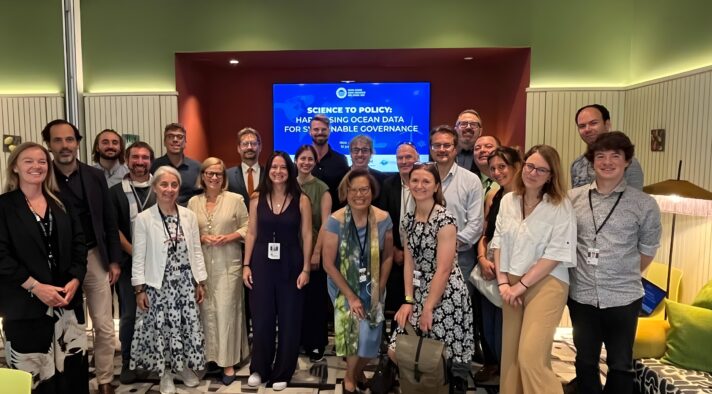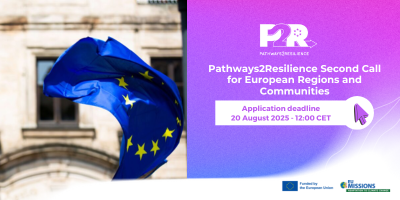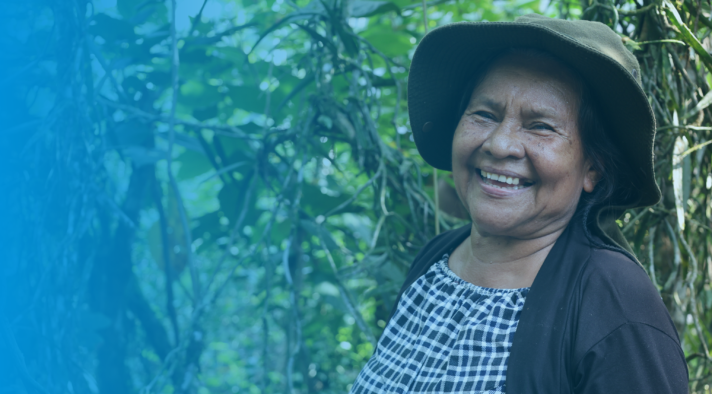We are excited to share the latest updates on a key EU initiative: Pathways2Resilience (P2R), a project in which Regions4 is a partner and is supporting efforts.
P2R In a Nutshell
The Mission on Adaptation to Climate Change focuses on supporting EU regions, cities and local authorities in their efforts to build resilience against the impacts of climate change. Its objective is to accompany at least 150 European regions and communities towards climate resilience by 2030.
Pathways2Resilience contributes to the objectives of the Mission and of the Adaptation Strategy by helping the regions to:
- better understand their climate risks
- develop their pathways to be better prepared and cope with the changing climate
- test and deploy innovative solutions needed to build resilience
The 1st and 2nd calls aim to provide 40/60 regions and communities with financial support through subgrant agreements, up to a maximum amount of 210,000€ for each region, along with supporting services and capacity-building activities for subgrants lasting up to 18 months.
The selection process will prioritise regions/communities with heightened vulnerability and low adaptive capacity to climate change impacts. This call aims to put together a diverse and inclusive portfolio of regions, ensuring a comprehensive validation of the P2R framework

The framework
The Regional Resilience Journey (RRJ) is an adaptable framework for regions and communities that wish to transition to climate resilience through a transformational adaptation approach. It helps regions to flourish in their future climates, by moving beyond reactive and incremental adaptation of existing systems. Instead, it seeks to bring about systems change where this is needed to close the adaptation gap and deliver long-term prosperity in the face of climate change.
The framework provides step-by-step guidance, a set of activities, tools and milestones that allows regions at all maturity levels to either produce their first climate resilience plans and intervention portfolios or to improve the existing ones by applying a systemic approach, just transition principles and by harnessing transformative innovation.

The Regional Resilience Journey (RRJ) framework
A systemic approach to accelerating climate resilience
Aiming at transformational adaptation the RRJ inherently supports a systemic or systems approach, which, instead of breaking down the complexities of climate resilience to be considered as separated parts, encourages to understand and address this complexity with all its relevant parts and relationships in its entirety.
The RRJ should be applied taking into account the local context and build on what has already been achieved or is in motion. The RRJ should build on already developed strategies – revising and revisiting where relevant.
It is not necessary to use the RRJ as a whole new methodology, starting from scratch.
The RRJ approach ultimately provides the regions with the tools and methodologies to collect the necessary information to use the RRJ itself in the most strategic way possible, recognising that the local stakeholders are often the most knowledgeable on their own needs.
A just transition to climate resilience
The RRJ is designed to support regions and communities in a just transition to climate change, having integrated a range of principles, processes and practices that aim to ensure that no people, workers, places, sectors, countries or regions are left behind in the transition. As suggested by the IPCC (2022) regarding just transitions, it stresses the need for targeted and proactive measures to ensure that any negative social, environmental or economic impacts of economy-wide transitions are minimised, while benefits are maximised for those disproportionally affected.
Adaptation Investment Cycle
The Adaptation Investment Cycle helps to mobilise finance and ensure that the Regional Resilience Journey leads to bankable projects (i.e. those that meet the conditions required by the financier to finance a project).
The consortium has developed the Adaptation Investment Cycle – an iterative, 6-step process to develop Adaptation Investment Plans, designed to be completed as part of the Regional Resilience Journey.
The Cycle develops the financial aspects of a Climate Resilience Strategy from the identification of adaptation needs and barriers to finance all the way to the implementation and monitoring of efficient adaptation projects.

The Adaptation Investment Cycle (AIC)
Pathways2Resilience will be developing detailed guidance, resources, and templates to support the successful regions to apply the Adaptation Investment Cycle.
In the context of Pathways2Resilience’s work on regional adaptation finance, a Practitioner Finance Expert Working Group was assembled acting as a liaison between regions and the broader financial assistance of Pathways2Resilience partners.
In addition, Pathways2Resilience will be developing a programme of training and capacity building, as well as working in depth with 9 regions across all levels of Maturity to provide tailored and targeted support.
Financial sources, instruments and best practice case studies to support financing regional adaptation
Pathways2Resilience has built a catalogue of 57 sources (institutions that provide finance for adaptation) and 78 financial instruments (mechanisms that enable the transfer of funds) for regions to use to support their adaptation efforts.
The catalogue includes a visual overview of sources and instruments, as well as detailed information on each, such as advantages and drawbacks, and key considerations for their use, as well as relevance to the Mission’s Key Community Systems.
In addition, the catalogue includes 169 case studies of public and private adaptation relevant to European regions. The elements of the catalogue can be filtered to meet your needs (e.g. by Key Community Systems, types of actors, typical funding sizes, financing strategies or hazards).
The catalogue can be used in isolation, but it has also been designed to support the P2R Adaptation Investment Cycle and help the development of Regional Climate Resilience Investment Plans.
A draft of the catalogue is available for download on the website.
The catalogue will continue to be developed and revised throughout the lifetime of the project. In addition, as part of the Mission, Pathways2Resilience is working with CLIMATEFIT – a project using Financing and Investment Taskforces in 20 Territories to create investment strategies, concrete and scalable investment plans, and bankable transformational investment cases. Together, the teams from both projects will develop and expand the catalogue. Planned enhancements include refining and expanding the definitions of sources and instruments, and the incorporation of an additional set of detailed case studies on financial instruments developed by CLIMATEFIT. We will also be hosting CLIMATEFIT’s more detailed deep-dive case studies on instruments when they become available.
P2R Achievements 2023-2024 and next steps for 2025-2027
- We selected the first cohort of 40 regions for the P2R programme that will receive support over 18 months:

- We prepared a range of guidance and support material for the regions to follow our key framework:
- Regions4 contributed to this guidance and provided the following case studies in cooperation with Scotland and the region of Catalonia:
- Case Study: Adaptation Scotland Guide to Adaptation Climate Finance (page 23)
- Case study: Catalan Climate Fund: Using New Taxes to Fund Mitigation and Adaptation Activities (page 49)
- Pathways2Resilience Climate Toolbox – link
- We have developed a training programme for the 40 P2R regions.
- We are in the process of establishing cross-mission exchange mechanisms, in collaboration with MIP4ADAPT/EC, and in the context of the Mission Adaptation’s FUTURIUMs Platform and their Thematic Working Groups (TWGs) and Communities of Practice (CoP), including:
- 4 Deep Dives facilitating expert exchanges around Key Enabling Conditions (Finance & resources, Governance and Innovation, Behavioural Change, Knowledge & Data) linking in particular to other relevant Mission Adaptation projects (1-2 meetings/year, + off-line work).
- 10 Innovation Practice Groups facilitating exchanges of knowledge and experiences amongst regions on 4 Key Enabling Conditions and 6 Key Community Systems also inviting interested regions (3 meetings/year):
Innovation Practice Groups’ (IPG) related to Key Enabling Conditions (KECs):
- Knowledge and Data
- Governance, Engagement & Collaboration
- Behavioural Change & Empowerment
- Finance & Resources
Innovation Practice Groups’ (IPG) related to Key Community Systems (KCSs):
- Ecosystems & Nature-Based Solutions
- Water Management
- Critical Infrastructure
- Land Use & Food Systems
- Health & Well-Being
- Local Economic Systems
! The Innovation Practice Groups’ (IPG) session will be open to all scheduled in March, May and September 2025.
Opportunities for European regions in 2025
- March 2025: Launch of the Expression of Interest Survey (EoI) – Q&A related to the grant: We will share with you the Expression of Interest Survey (EoI) so you can assess if you would like to apply for the next call of grants.
- June 2025 > 2nd call campaign: we will select 60 regions to work on in 2026 and 1st semester of 2027.
- Knowledge exchange across ‘Innovation Practice Groups’ (IPG): The 10 IPGs will focus on topics such as Key Enabling Conditions and Key Community Systems.
The 10 IPGs session schedule:
> Week commencing the 10th of March 2025 – 1st IPGs Week (10 sessions – 2/3 h each)
>Week commencing the 26th of May 2025 – 2nd IPGs Week (10 sessions – 2/3 h each)
>Week commencing the 22nd of September 2025 – 3rd IPGs Week (10 sessions – 2/3 h each)
- Training sessions and tools: most of the resources are/will be public on:
>P2R website: https://www.pathways2resilience.eu/
>P2R Toolbox: https://p2r.toolbox.urban.tecnalia.dev/



